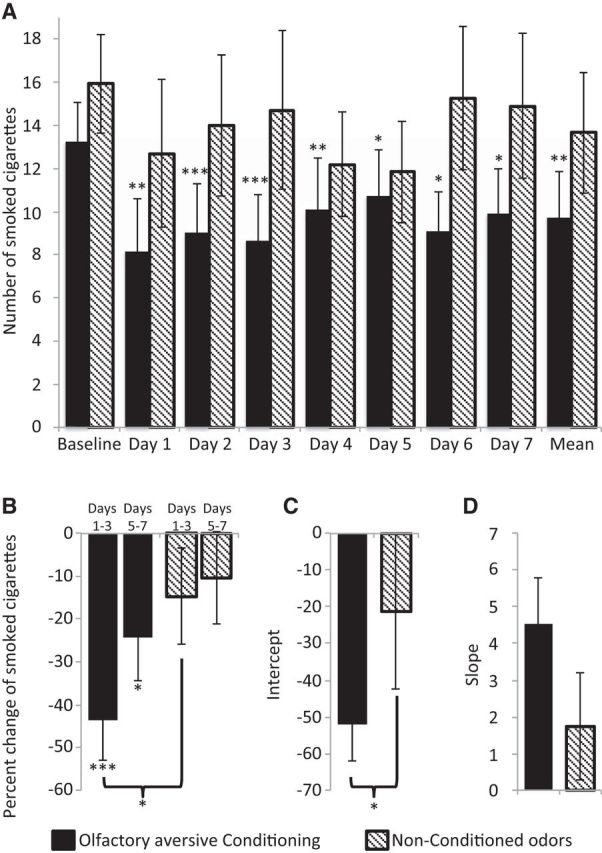Figure 7.

Olfactory aversive conditioning reduced smoking more effectively than nonconditioned odors. A, Number of smoked cigarettes at baseline and in each day following olfactory aversive conditioning (black) and nonconditioned odor (striped) administration during stage 2 sleep. B, Percentage change in smoked cigarettes in the first half (days 1–3) and second half (days 5–7) of the experiment following olfactory aversive conditioning (black) and nonconditioned odor (striped) administration during stage 2 sleep. C, D, Intercept (C) denoting the effect size of the change in smoked cigarettes and slope (D) denoting the change in smoked cigarettes across 7 PE days following olfactory aversive conditioning (black) and nonconditioned odor (striped) administration during stage 2 sleep. *p < 0.05, **p < 0.01, ***p < 0.005.
